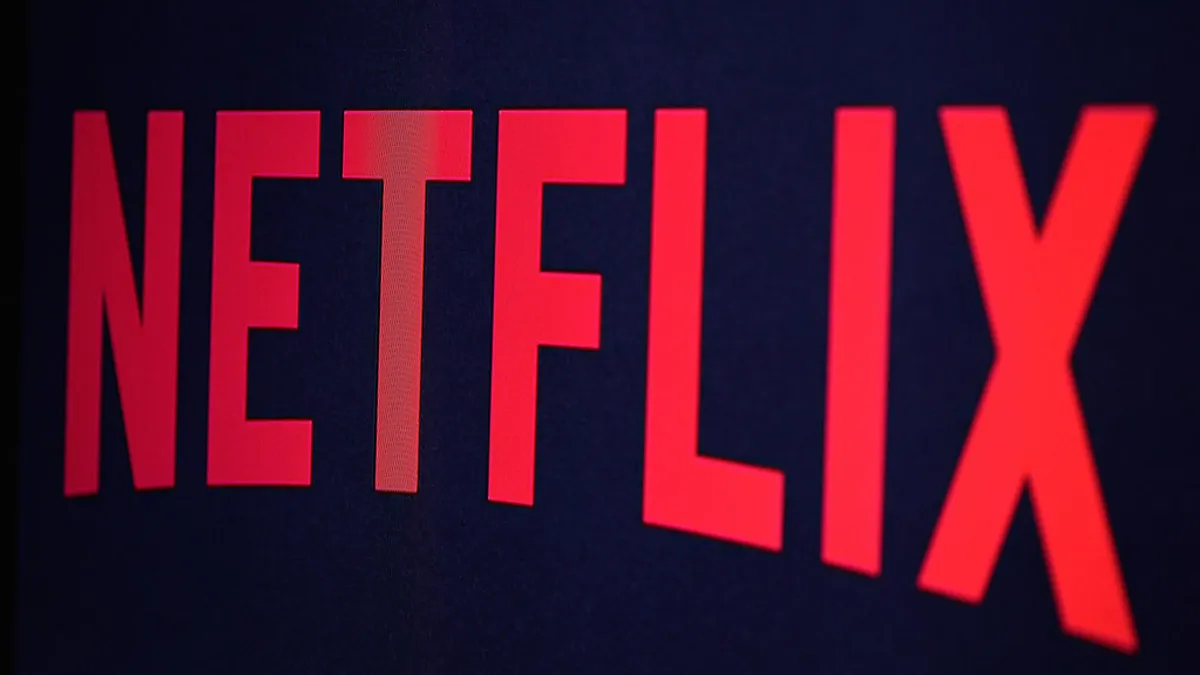Dive Brief:
- Netflix is moving forward with several initiatives that will shift the streaming experience for subscribers, including expanding paid sharing features as well as building out an ad-supported subscription option for potential viewers, according to its second quarter earnings call Tuesday.
- Tapping advertising as well as paid sharing features could help the company to “better monetize our viewing and grow members,” CFO Spence Neumann said during the streaming service’s second quarter earnings call. Diversifying from a subscription-only revenue model to this kind of dual revenue stream of both advertising and subscription funds could yield benefits but also comes attached with challenges, said Eric Schmitt, senior director analyst at Gartner.
- “The good news is your financial models diversified,” Schmitt said. “You have multiple streams of income, you have more levers and dials. The bad news is it's more complicated to run, especially if you've previously only operated on one side of the model.”
Dive Insight:
The streaming service has managed to somewhat cap the bleed of subscribers away from its platform, reporting a net loss of 970,000 subscribers overall for the quarter compared with the 2 million the firm previously forecast. Revenue grew 9% year-over-year (YoY) to reach $7.9 billion, according to its earnings results.
Netflix also announced its intention to move forward with trials of paid sharing features, having added an “add extra member” feature for subscribers in Chile, Costa Rica and Peru in March. It now plans to debut a paid “add extra home” option for viewers in Argentina, the Dominican Republic, El Salvador and Honduras in August, it said in a July 18 update. Users in such countries will be asked to pay $2.99 per additional home.
It also recently partnered with Microsoft to create an ad-supported subscription plan, pitching the service as one that offers “more choice” to its customers while also presenting a “better-than-linear TV” brand opportunity for advertisers.
The company is tackling both paid sharing and advertising as ways that could help the firm monetize viewing, Neumann said during the call. Netflix is likely to see a more near-term impact from paid sharing, he said, which also comes with relatively low incremental expense compared to its ad-supported model.
“It's a slower build over multiple years to have a material impact on the business,” Neumann said of advertising during the earnings call. “But our focus across 2023 and '24 is to build out to kind of return to a more accelerated revenue trajectory for the business.”
The company’s move to a dual-income model could indicate a potential broader trend for the subscription market in the long-term, Schmitt said.
“Fifty, sixty years of TV history tells us that the market kind of settles on this dual revenue stream where you can have both the advertising and the subscription revenue coming in, so I think it will be it will be unlikely that we [will] see more subscription only types of models,” he said. “In fact, we might see the opposite.”
Netflix will also have to grapple with how to structure its ad-supported option, Schmitt said, with the company facing big decisions on how it could potentially offer access to potential advertisers. Allowing companies to take a “Super Bowl approach” where they buy access wholesale to subscribers is one option, but the company could also “slice and dice” its audience into more niche segments, he said.
“Netflix enabled advertising isn't going to open up new consumers to advertising,” Schmitt said. “It's going to open up more inventory against people who were already reachable, so that should drive down the cost of media to those households.”
Ideas such as ad-supported streaming still remain divisive among consumers. A June 2022 study by Gartner, authored by Schmitt, found positive and negative sentiments regarding ad-supported subscriptions were broadly even: Fifty percent of Netflix users were aware of the company’s intent to experiment with ads, with 48% stating they would be “unlikely” to try an ad-supported plan.
Twenty-four percent of users stated they would be “likely” to do so, while 29% of consumers were undecided. However, a critical data point that could prove helpful in predicting subscribers’ response — the cost of the ad-supported subscription model — is still missing, Schmitt pointed out.
The company’s bid to roll out such features also comes on the tail of one of Netflix’s worst quarters in recent history, with the company’s first quarter results showing slowing revenue and a loss of 200,000 subscribers — the first quarter where the firm had lost subscribers in over a decade, according to an April 19 report by CNN.
Its second quarter results have seemingly revived both company and investor confidence, with its stock price surging 8%. The company is also continuing to monitor macro-level economic trends such as inflation, though entertainment — especially paid TV or subscription models — tend to be somewhat resilient to downturns, Neumann said during the earnings call.
The company forecasts it will add 1 million subscribers in its third quarter.












